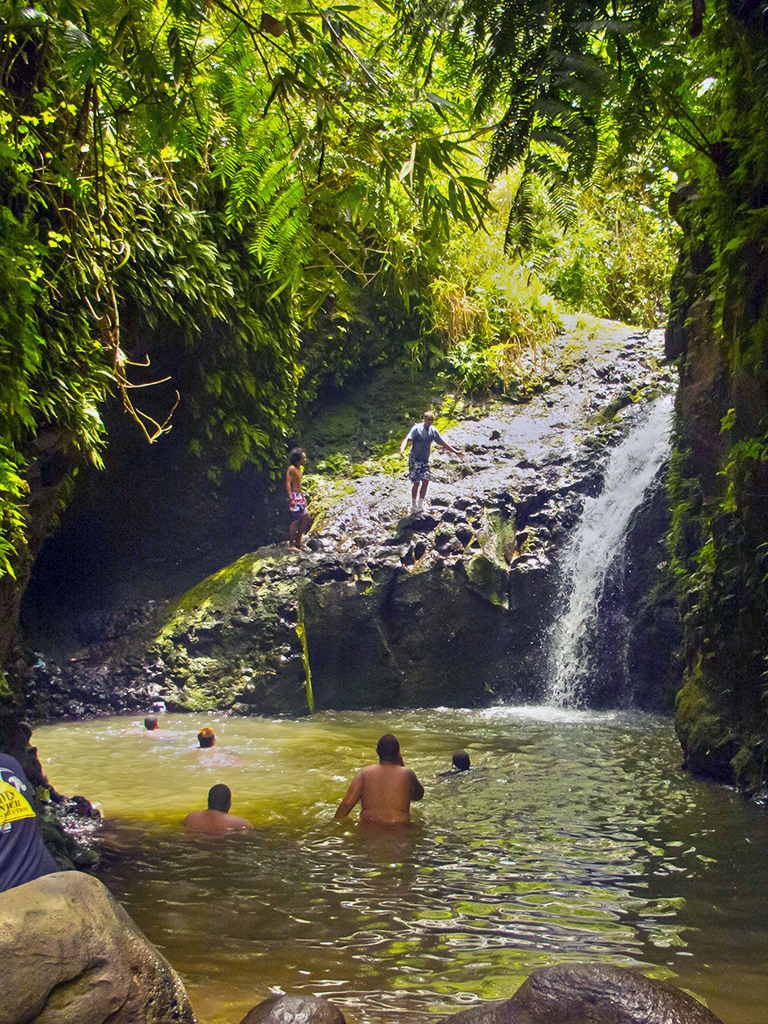Leptospirosis
Report a Case
Disease Reporting Line:
(808) 586-4586
About This Disease
Leptospirosis is a bacterial disease that affects humans and animals. It is caused by the bacteria of the genus Leptospira. The disease occurs all over the world, but is most common in warm climates. Leptospirosis can infect cattle, pigs, horses, dogs, and wild animals such as rodents (rats, mice), mongoose, and sea mammals.
Signs and Symptoms
Leptospirosis can cause flu-like symptoms and can be mistaken for other diseases. In some persons, the infection can be mild and without obvious symptoms.
The symptoms include fever, chills, muscle aches, rash, jaundice (yellowing skin and eyes), headache, red eyes, abdominal pain, vomiting, and diarrhea.
A person can become ill 2 days to 4 four weeks after being exposed. The symptoms may last from a few days to several weeks. Without treatment, recovery may take several months.
Transmission
You can get Leptospirosis by swimming or wading in freshwater puddles, ponds, or streams contaminated with animal urine, or by encountering wet soil or plants contaminated with animal urine. The bacterium enters the body through broken skin or through the soft tissues on the insides of the mouth, nose, or eyes. You can also get it by direct contact with urine, blood, or tissues from an infected animal. Leptospirosis is rarely spread from person to person.
Diagnosis
If you have symptoms of Leptospirosis and possible exposure to infected water and/or animal urine, your healthcare provider may conduct a blood test to determine if you have been infected.
Treatment
A doctor can prescribe medicines to treat leptospirosis. Leptospirosis is treated with antibiotics, such as doxycycline or penicillin. If not treated, the patient can develop meningitis, respiratory distress, kidney damage, or liver damage. In rare cases, even death may occur.
Risk in Hawaii
Leptospirosis is currently circulating in Hawaii. It is estimated that 100–200 cases of Leptospirosis are identified annually in the United States. Puerto Rico reports majority of the cases, followed by Hawaii. This is why it is important to practice prevention by not being exposed to freshwater ponds or streams in Hawaii, especially if you have open cuts or sores (see prevention).
People can be exposed to it if they work outside. It is an occupational hazard for farmers, mine workers, sewer workers, slaughterhouse workers, veterinarians and animal caretakers, fish workers, dairy farmers, and military personnel.
Prevention
- Do not swim or wade in any freshwater streams or ponds in Hawaii, especially when you have open cuts or sores. Swimming with your head underwater also increases your risk of infection through the eyes, nose, and mouth.
- Do not drink pond or stream water without boiling or chemically treating it.
- Keep catchment water-collection areas free from overhanging tree branches and prevent access to these areas by animals.
- Control rats, mice, and mongooses in areas around the home and work site with trapping and poisoning, and by removing their nests.
- Wear protective clothing including gloves, boots, long-sleeved shirts, and pants when clearing shrubs or grass, or working in wet soil where leptospirosis is a problem.
- Wear gloves when disposing of dead animals and when gutting (cleaning) livestock or game animals.
- Vaccinate farm animals and pets.
Additional Resources
Information for Clinicians
Symptoms include fever, headache, chills, sweating, muscle aches, painful eyes, vomiting, and sometimes a rash. The incubation period is usually 5-14 days, with a range of 2-30 days.
The illness may have two phases. The first phase, as described above, lasts 5-7 days. This is followed by a remission of 1-4 days, which is followed by a return of fever and illness. Aseptic meningitis may occur in this second phase. The most severe form of illness (Weil’s disease) may include jaundice, impaired renal functions, hemolytic anemia, hemorrhage, and may be fatal. Case fatality rate is 5-15%.
Other conditions, with similar symptoms, that should be considered include influenza, meningitis, murine typhus, hepatitis, and arboviruses (i.e., dengue fever, zika, and malaria).
Diagnostic testing to confirm Leptospirosis infection should include paired sera taken at least two weeks apart. Samples will be sent to Kauai for Microscopic Agglutination Testing (MAT). Additionally, a Complete Blood Count (CBC) should also be conducted. Additional laboratory findings common to Leptospirosis infections include low platelet counts and elevated blood urea nitrogen and serum creatinine.
Leptospirosis has been reinstated as a nationally notifiable disease as of January 2013.
Last reviewed May 2023


